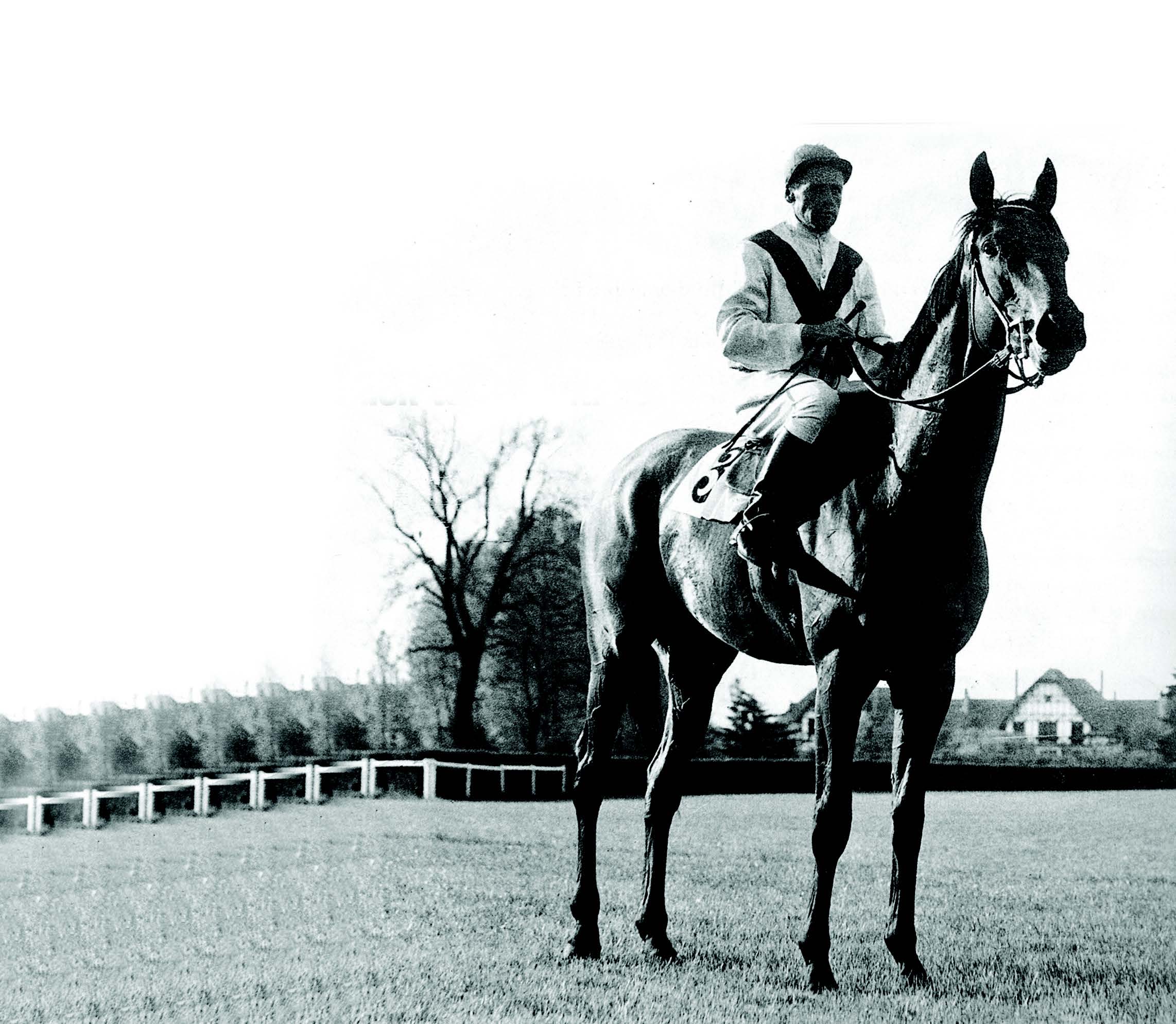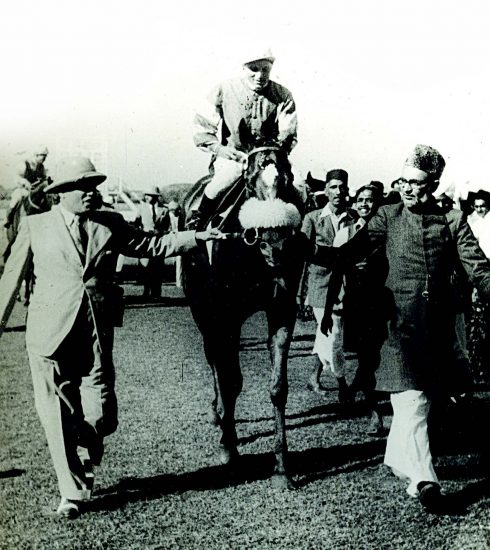RIBOT Wins Back-To-Back Arcs
 Ribot, the champion
Ribot, the champion
[dropcap]T[/dropcap]o the hardboot horsemen of mid-twentieth century Europe, Italy was the bush league. But Fredrico Tesio and the horses bred at his Dormello Stud on the shores of Lake Maggiore in northern Italy changed that perception. A pedigree genius and a master craftsman with bloodlines, Tesio had but one goal: “To breed and raise a racehorse which, over any distance, could carry the heaviest weight in the shortest time.” With Donatello II (undefeated in Italy) he gained the first plateau; he scaled even greater heights with Nearco (undefeated); but with Ribot he reached the summit.
From the moment of his birth in England, Ribot faced an uphill challenge to prove his worth, not only to the racing world but also to Tesio himself. Like any expectant father, Tesio must have looked forward to the birth of Romanella’s baby, as her mating to Tenerani would produce a foal whose pedigree was inundated with Dormello blood (six of the ancestors in the first three generations of his pedigree having been bred by Tesio). How disappointed he must have been with the results. For instead of a big, robust foal to embody the best of his breeding theories, there was a rather non-descript colt that would be called “il piccolo’ because of his small size.
As she had with all other foals born to Dormello mares, Tesio’s wife, Dona Lydia, documented Ribot’s birth in the Dormello register, a red leather-bound book in which she painstakingly recorded Tesio’s comments on each mare and foal. Ribot’s birth was duly noted, but conspicuously absent are any comments. Ribot remained the smallest of his crop, and when time came for Tesio to nominate to the Classics those foals he deemed worthy, the runt did not make the list. The yearling colt might have been small and ordinary, but he was also alert and intelligent. And, as awkward teenagers so often do, Ribot matured from a gangly youth into a graceful athlete.
Never a tall horse, (only 15.3 hands), he was beautifully balanced and squarely built; his strong back connected a deep, sloping shoulder to tremendous hindquarters. But perhaps his most outstanding feature lay in his very deep girth—so deep in fact, that not a single girth band in the stable fit him and one had to be made specifically to fit his frame.
His constant time outdoors, rough housing with his fellow yearlings, developed good bone, strong limbs, and extremely muscular gaskins. Not a handsome horse, to be sure, but certainly noble. Ribot embodied power and grace, a statue of a da Vinci warhorse come to life. Tesio’s opinion of the youngster changed as he watched Ribot gallop fluidly through the regimen prescribed by Ugo Penco, Ribot’s trainer throughout his racing career. At some point Tesio must have thought, here is a horse with a future. But the breeder would not live to see his hopes realized. He died on 1 May, 1954, a mere two months before Ribot made his winning debut over five furlongs at San Siro in Milan.
Three races at two resulted in three wins. By the time the three-year-old had won the Premio Besana
over twelve furlongs by ten lengths, word of an unbeaten colt who could run a bit, leaked beyond the backwater borders of Italy to Europe’s racing heartland. Unheralded and relatively unknown to the mainstream of the racing world, Ribot was ready to take on the best that Europe had to offer and to do
so in one of Europe’s most prestigious races: France’s Prix de l’Arc de Triomphe. Not old by the standards of
the European Classics, the Arc in only twenty seven running’s had, nevertheless, earned the reputation as Europe’s most exacting weight-for-age event for three-year-olds and up. When the field for the 1955 Arc might not necessarily have measured up to the fields of previous years, the entrants did not lack credentials. Among those facing the starter were two French Classic winners (Douve and Rapace), the winner of the 1954 Irish Derby (Zarathustra), the winner of the Grand Criterium (Beau Prince II), an assortment of other solid Stakes performers and of course, the upstart, Classicdeprived Ribot.
A three-length win over the older handicap horse Beau Prince II increased Ribot’s reputation to a minor degree. But naysayers gave voice to what many silently thought: Tesio’s colt had beaten nothing of note. His Arc competition the following year would be far more formidable. Remaining undefeated through his first four stars at four, Ribot ravaged his competition. A foray to England for the twelve furlong King George VI and Queen Elizabeth Stakes at Ascot paved the path for the English press to scorn him further, insisting that he “looked like an equine scarecrow and couldn’t handle the better horses of England.” He didn’t just handle them, he man-handled them. Shut off on three different occasions, he roared home a five-length winner.
By the time Ribot arrived at Longchamp for his second Arc attempt, he was being praised as a “wonder horse.” For the first time since Omaha contested the Ascot Gold Cup, a pair of American horses had ventured across the Atlantic to take on the European competition in a major race: C. V. Whitney’s pair of grass specialists, Fisherman and champion Career Boy. Also included in the Arc field were a French champion (Tanerko), two Oaks winners (Sicarelle and Apollonia), and an Irish Derby winner (Talgo). In his final start, Ribot won in a gallop under regular jockey Enrico Camici for his sixteenth win in as many starts and became only the third horse to win back-to-back Arcs, following Corrida and Tantieme. In the year’s since Ribot’s accomplishment, Alleged repeated the feat winning the Arc in 1977 and 1978; and Treve in 2013 and 2014.
— Courtesy Horse Racing’s Top 100 Moments
OCTOBER-NOVEMBER 2016












